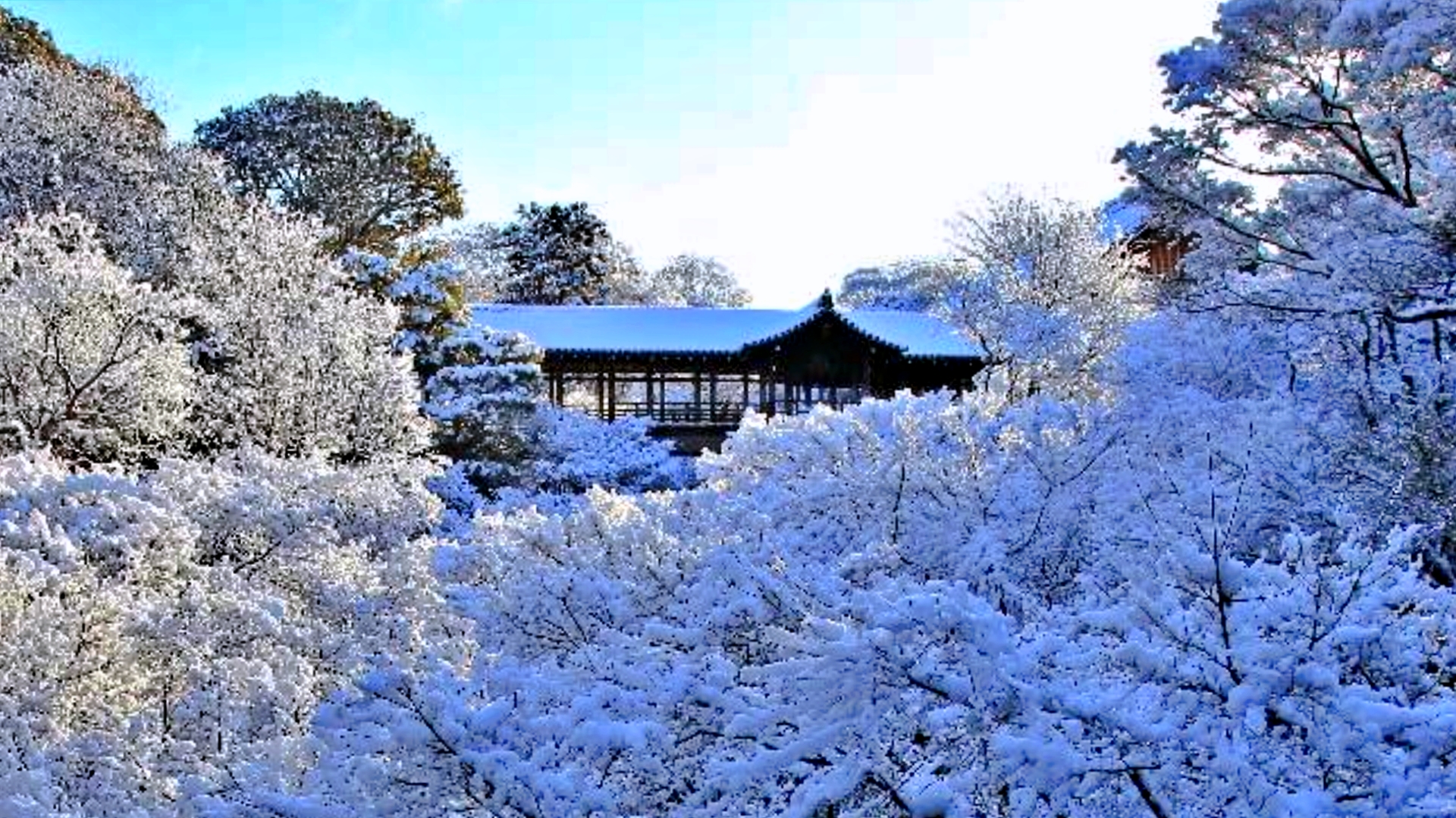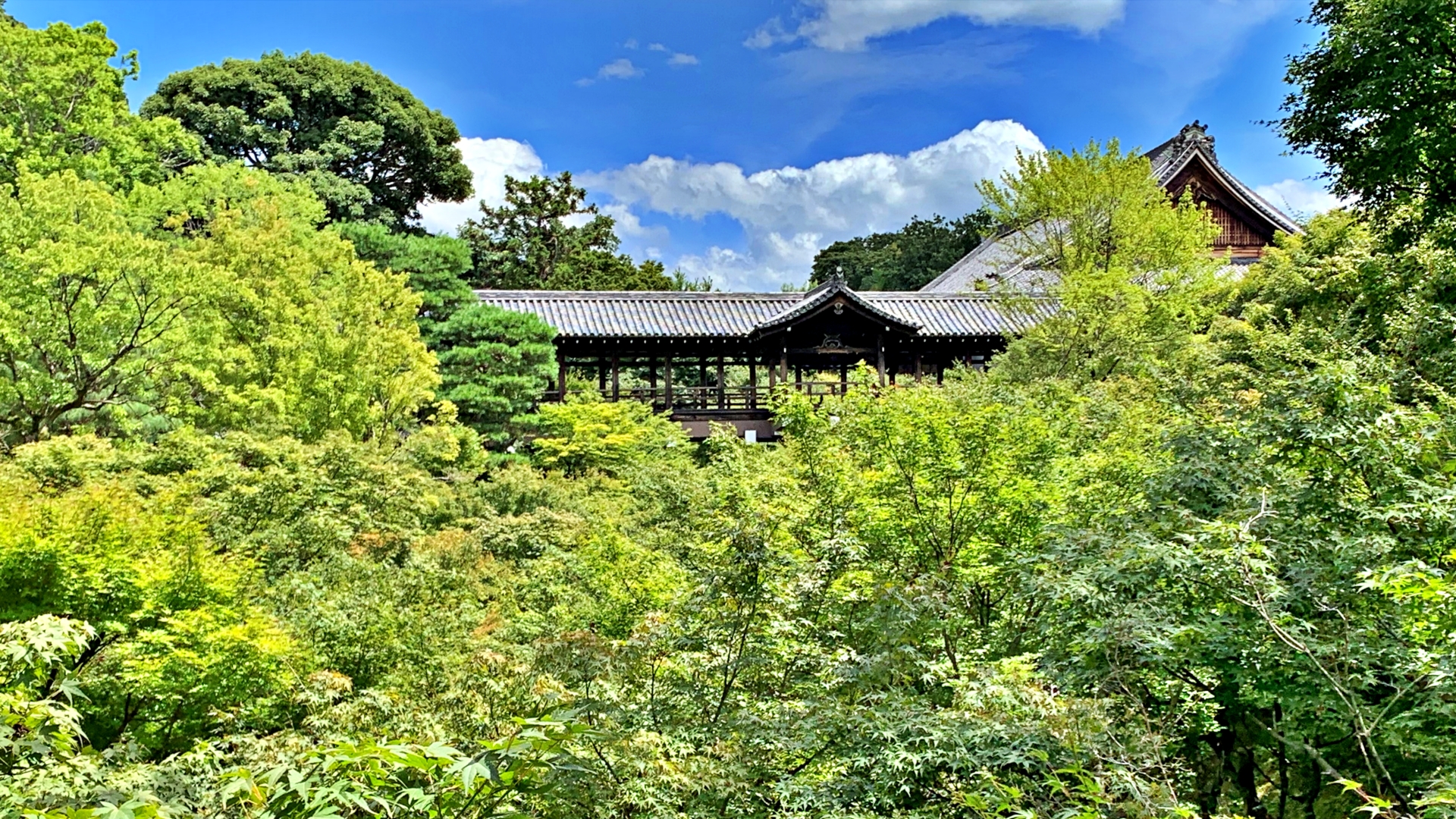Tofukuji Temple, the head temple of the Rinzai sect Tofukuji sect, is known as one of the best autumn leaves spots in Kyoto.
Among them, the autumn leaves that dye the valley called “Sengyokukan” that runs through the precincts from east to west are spectacular, and there are two bridges called Tsutenkyo and Gaunkyo.
The view from the corridor is truly spectacular.
Sengyokukan at Tofuku-ji Temple is famous for its autumn leaves, but the scenery that changes with the seasons is also wonderful.
Kyoto was hit by heavy snow for the first time in a while this year. Sengyokukan was also beautifully decorated with snow.
Scenery of Sengyokukan that changes with the seasons
This is the seasonal scenery of Sengyokukan, looking at Tsutenkyo Bridge from Gaunkyo Bridge.
The accumulated snow absorbs the surrounding sounds, creating a quiet and mysterious atmosphere that makes you feel as if you are in another world.
You can spend a luxurious time monopolizing this view with no one around.
From spring to summer is the season of fresh green. The lush maples are gentle on the eyes and give a refreshing feeling.
At this time of year, wild birds such as the hototogisu and the Japanese white-eye come out of nowhere and let us hear their beautiful chirping.
Because it is a valley, the temperature does not rise even in midsummer, and a pleasant breeze blows on sunny days.
Needless to say, autumn leaves. It is crowded with many tourists during the season.
Tofuku-ji temple guide map
The nearest station is Keihan Electric Railway “Tofukuji Station” or “Toba Kaido Station”.
The distance to Tofukuji’s entrance “Kusakamon” is slightly closer from “Toba Kaido Station”, but there are more places to see at “Tofukuji Station” where there are many sub-temples along the way.
Tofuku-ji Temple, also known as the Garan Zura
Did you know that the head temple of the Rinzai sect of Buddhism has a name called “Zenzura”?
Zen mask is a name that expresses the characteristics of the temple in one word, and Tofuku-ji is called “Garanzura” because it was a temple with a large monastery.
[What is Garan]
The word Garan is a compound word of Sanskrit “Sangha” and “Arama”, and the etymology is “Sangaram”.
And “Sogaranma” was omitted and it came to be called “Garan”.
The Sanskrit word “sangha” means a group of people who believe in the teachings of Buddha, “arama” means a place to enjoy, and “sangarama” means a quiet place where monks gather to practice Buddhism.
Later, temple structures came to be called garan.
In short, a garan is a building in a temple, and in Zen Buddhism, the seven buildings of the temple gate, butsuden, dharma hall, kuri, priest’s hall, bathroom, and tosu are collectively called ‘Shichido Garan’.
Tofuku-ji Temple has one of the largest temples in Japan, the Shichido Garan, which is why it is called Garanzura.
Conclusion and recommendations
Tofuku-ji Temple has a famous building designated as a national treasure and an important cultural property called “garan mask”, and a “hojo garden” that expresses the “Big Dipper” and “checkered pattern” that are designated as national scenic spots.
The three bridges (Gaunkyo, Tsutenkyo, and Engetsukyo) spanning the valley that flows through the precincts of Tofuku-ji Temple offer a spectacular view of magnificent nature.
Please come to this charming Tofukuji Temple.



